Disclosure: We may get commissions for purchases made through links in this post.
Sooner or later, you would need to have new tires installed or mounted due to wear and tear. These new tires will also require balancing to ensure better drive train performance, smooth ride, and reduced tire wearing; in fact, balancing is also part of regular car maintenance. Knowing how much it costs to mount and balance tires allow you to allot a budget to keep your vehicle in tip-top condition.
So, how much does it cost to mount and balance tires? The exact cost of mounting and balancing your tires will depend on many factors, such as tire size, your location, and the company doing the job. For instance, off-road vehicle tires will be around the mid-range price since they have big tires.
To help you set the right budget, let’s look into the average cost of balancing and balancing and mounting services. We’ll also talk about companies that offer some of the most affordable services for most types of vehicles. Then, we’ll provide answers to some of the most frequently asked questions about tire mounting and balancing.
The number one factor determining the cost of mounting and balancing your tires is your vehicle’s type. The larger the vehicle, the higher the price since they have larger tires.
As of writing, you’ll expect to pay from $13 to $45 to mount one tire or $52 to $180 for four tires. In terms of balancing, it would be around $10 to $15 for each tire or approximately $40 to $60 for all tires.
However, the price would be a bit higher if you plan to have winter tires installed. Expect to add from $8 to $10 per tire.
The price range itself tells you that some companies charge lower than others. Likewise, most companies offer packages wherein balancing is already included in the installation or mounting price.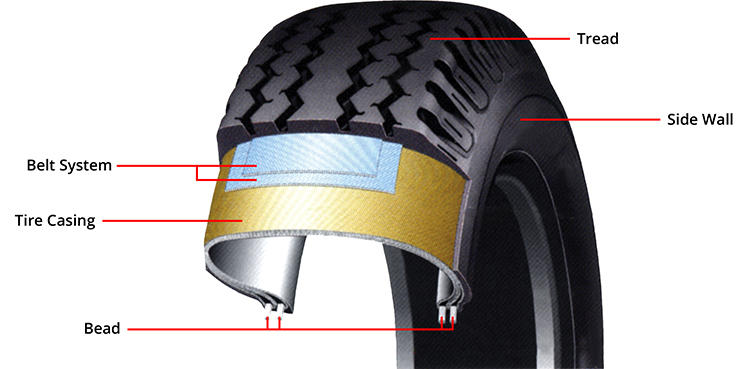 Some even include other services.
Some even include other services.
For reliable companies that can mount and balance your off-road vehicle tires at a cost-efficient price, the top options are Walmart, Discount Tire, BJs, NTB, and Costco.
Among the most popular retail corporations in the US, Walmart Inc. offers several tire services for cars, ATVs, and UTVs.
For mounting and balancing, the current package ranges from $48 to $60 for four tires or $12 to $15 per tire if you bought the tires from Walmart. The rate includes lifetime rotation and balancing for every 7,500 miles and new valve stems, TPMS service, and 50-mile lug re-torque. Since tire disposal isn’t included, expect to pay around $1.50 for each tire or $6.
An optional add-on is the road hazard warranty that costs $10 per tire or $40 for the four tires bought at Walmart. It will cover flat tire repairs and any unforeseen road hazard and replace non-repairable tires with at most 25% tread wear.
Considering every fee, service, disposal, and warranty, how much does it cost to mount and balance tires at Walmart? Well, you would spend between $90 and $106.
On the other hand, you would need to pay an additional $10 per tire or $40 for four tires if you purchased the tires from a different company. Thus, expect to pay between $88 to $100 for four tires. Of course, you would also need to pay the disposal fee if you’ll leave the old tires.
So, how much in total would you pay if you didn’t purchase the tires at Walmart? That would be between $94 and $106, without a warranty, of course.
Don’t prefer to have your tires balanced and mounted at Walmart? Maybe because of the long line, or they’re not a tire-specific company? Discount Tire would be your best option, whether you have a small car, Jeep, ATV, or UTV.
As a USA-based tire and wheel retailer, the quote provided by Discount Tire for the wheel and tire package you bought from them already includes services. If you only purchased the tires or have tires from other companies, you’d be charged around $21 to $33 per tire or $84 to $132 for four tires. This installation price covers mounting, lifetime balancing and rotating, new valve stems, flat repairs, airchecks, and inspections.
If you only purchased the tires or have tires from other companies, you’d be charged around $21 to $33 per tire or $84 to $132 for four tires. This installation price covers mounting, lifetime balancing and rotating, new valve stems, flat repairs, airchecks, and inspections.
Similar to Walmart, the disposal fee isn’t included in the quote. Discount Tire will charge around $2.75 per tire or $11 for four tires.
How about the road hazard coverage at Discount Tire? Unlike other tire servicing companies, Discount Tire refers to this as the Certificate for Repair, Refund, or Replacement. Its cost is approximately 15% or 16% of the tire’s price tag. This “warranty” is valid for three years from the date of purchase.
Although you’ll find that BJs Tire Center offers the greatest value for your money, they’re not at the top of our list because they only install tires bought from them. Nonetheless, they have several tire brands available such as Goodyear, Michelin, and Bridgestone.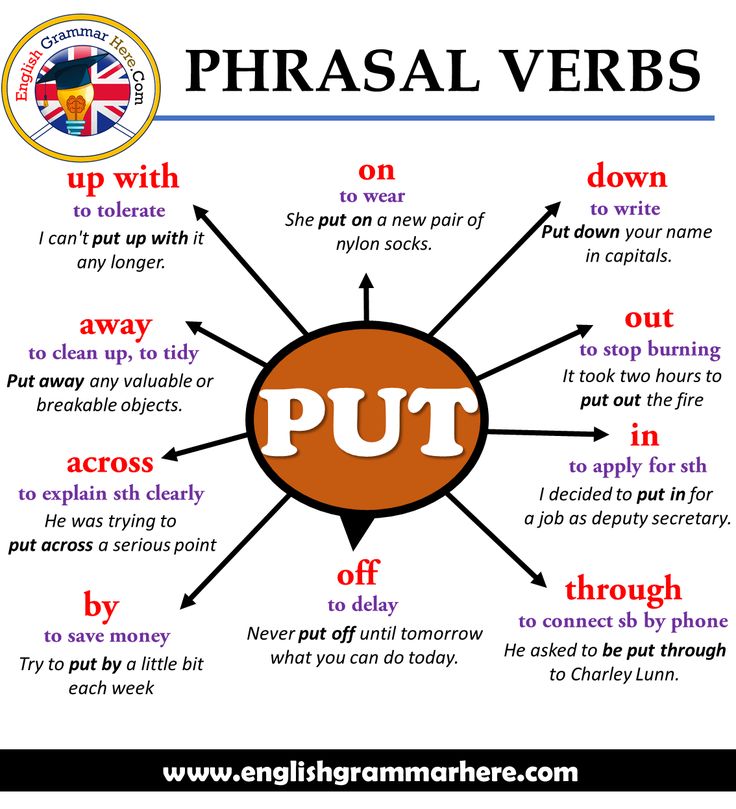
Members of the warehouse club would need to pay around $20 for installing or mounting one tire. This package includes lifetime balancing and rotation, inflation checks, flat repairs, new valve systems, tire disposal, and a three-year road hazard warranty.
However, you would need to pay approximately $5 per tire for the TPMS kit. Therefore, in total, you would need to pay about $60 for four tires.
Another option you might want to consider because they have branches in several states, NTB or National Tire & Battery, doesn’t offer better packages than Walmart and Discount Tire.
The company’s fee is around $17 per tire or $68 for four tires, including lifetime balancing and rotation. For the TPMS kit, you would need to pay $8 per wheel, while you would need to spare $3 per tire for the disposal fee. Lastly, the cost for the hazard warranty is 16% of the tire’s cost. Overall, you need to prepare at least $122 for four tires.
The best thing about NTB is they have lots of promotions and coupons that you can take advantage of by visiting their deals and savings page. They also offer many car maintenance services, so you can have almost everything done to help save you time.
They also offer many car maintenance services, so you can have almost everything done to help save you time.
Exclusively for members, Costco offers tire mounting at a rate of $18.99 per tire or almost $76 for four tires, which include nitrogen tire inflation, lifetime balancing, rotation, air pressure checking, and flat repairs, plus new valve stems and tire disposal. On top of that, you’ll enjoy five years of road hazard warranty. For TPMS, you would need to pay an additional $3 per tire.
One problem with Costco is that they don’t install UTV tires for street use and ATV tires. However, they sell Greenball tires (View on Amazon) for these rides and have them delivered directly to your home. Also, you’ll only find three tire brands for cars: BFGoodrich, Michelin, and Bridgestone (View on Amazon).
Nonetheless, members will also enjoy service center discounts through the Costco Auto Program.
Let’s tabulate the numbers, perks, and additional costs to help you compare each company easily and quickly.
| Company | MinimumCost per Tire | Inclusions | AdditionalCosts per Tire |
|---|---|---|---|
| Walmart | $15 ($25 for non-Walmart tires) | TPMS KitsLifetime Balancing and RotationLug Re-torqueNew Valve Stems | $10: Road hazard warranty$1.50: Tire Disposal |
| Discount Tire | $21 | TPMS KitsLifetime Balancing and RotationNew Valve StemsInflation checks | $2.75: Tire Disposal$15 to 16% of Tire Cost: Warranty |
| BJs | $20 | Lifetime Balancing and RotationNew Valve StemsInflation checksFlat RepairsTire DisposalRoad Hazard Warranty (Three Years) | $5: TPMS Kit |
| NTB | $17 | Lifetime Balancing and Rotation | $8: TPMS Kit$15 to 16% of Tire Cost: Warranty$3: Tire Disposal |
| Costco (Members-Only) | $18.99 | Lifetime BalancingLifetime RotationLifetime Inflation ChecksLifetime Flat RepairsNew Valve SystemsTire DisposalRoad Hazard Warranty (Three Years) | $3: TPMS Kit |
There would be times when you would only need to have your tires balanced without replacing the tires, as this is part of maintenance.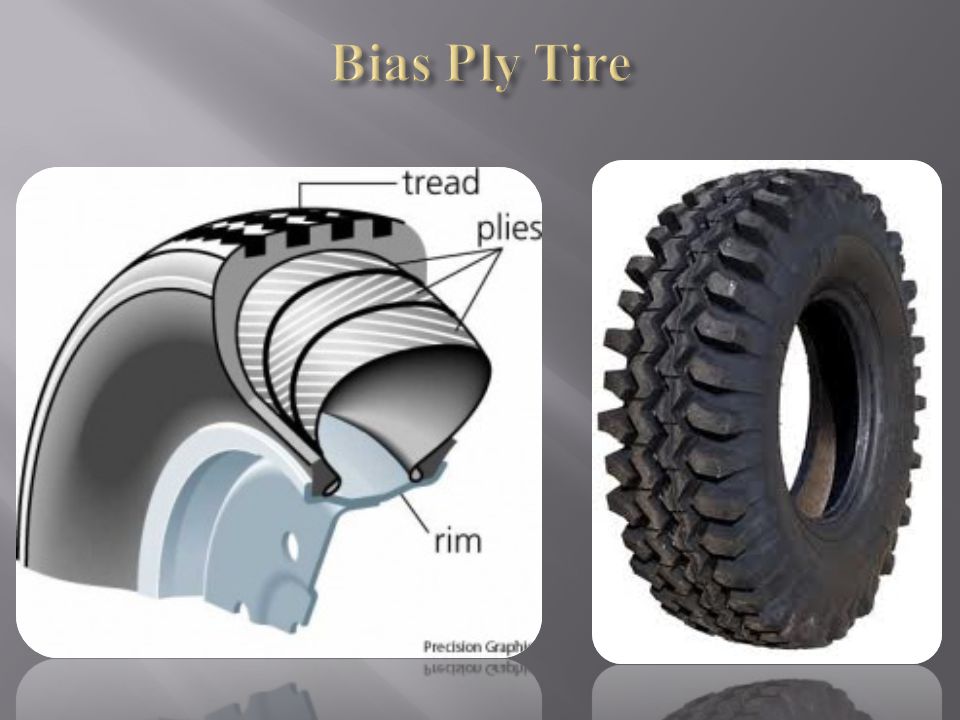 Most experts suggest that you have them balanced every 24 months or every 5,000 to 7,500 miles.
Most experts suggest that you have them balanced every 24 months or every 5,000 to 7,500 miles.
Thus, although the companies we mentioned above include lifetime balancing, you might not currently enjoy the said perk since you have your tires mounted by a different company.
Here are expected average costs per tire when you visit the companies mentioned above:
Now that you’re familiar with the cost to mount and balance tires, you probably have a few questions in mind. We’ve answered common questions to help you understand better why it’s essential to set a budget for tire mounting and balancing.
Understandably, you might want to mount and balance your tires because of the high cost. However, it might cost you more if you do so because you don’t have the right pieces of equipment and tools. You might end up damaging the wheels and tires or not achieving the proper balance, risking your safety and car’s performance.
However, it might cost you more if you do so because you don’t have the right pieces of equipment and tools. You might end up damaging the wheels and tires or not achieving the proper balance, risking your safety and car’s performance.
Whether driving off-road or on-road, professionals do not recommend one-tire replacement due to differences in tread patterns, resulting in stability issues, especially when driving at high speed. You’ll also notice vibrations, noises, and other unpleasant issues that make driving very inconvenient and unsafe.
You can, however, have two pairs replaced, such as both front tires or both rear tires. Still, it’s always best to have four tires replaced at the same time.
Definitely! There are tire recycling centers where you can bring your old tires, so you don’t have to pay the tire disposal fee. If you’re into DIY crafting, you may also repurpose your old tires into usable and decorative items.
The average cost of mounting and balancing a new set of tires is around the hundred-dollar mark, which will be nearly $150 for larger units like Jeeps and ATVs. Yes, it’s costly because you also need to purchase tires, but it won’t be as expensive as when you get into an accident due to unreliable tires.
The five companies we included on this list allow you to purchase tires without worrying about where you can have them mounted and regularly balanced. Choose the company that works best for your budget and specific needs. If you need to have your ATV or UTV tire (Check Amazon for Price) replaced or serviced, though, Walmart will be your best option and most affordable option.
https://reviews.cheapism.com/best-price-tire-installation-7-chains-face-4204/#close
https://icdsc.org/average-tire-mount-and-balance-cost/
https://www.cashcarsbuyer.com/cost-to-mount-and-balance-tires/
https://www. motorverso.com/cost-to-mount-and-balance-tires/
motorverso.com/cost-to-mount-and-balance-tires/
Picking Tires – What is the average price to get tires mounted and balanced
At some point, every car requires new tires. Since you want to budget accordingly, it’s important to know how much does it cost to replace your tires?
In this guide, we cover the varying factors that influence the new tire price. We also give you a few tips that may help you save some money.
How Much Do New Tires Cost?
Factors Affecting Cost to Replace Your Tires
1. Tire Size
2. Brand
3. Installation Cost
4. Tire Disposal
5. Road Hazard/Warranty Protection
6. Wheel Alignment
How to Save Money on Tires
1. Shop Around
2. Watch for Sales
3. Take Advantage of Rebates
4. Ask about Takeoffs
5. Use All-Season Tires
New Tires FAQs
How long should tires last?
When should you change tires?
Can I replace two tires instead of four?
How do I find the right tire size?
How Much Do New Tires Cost?A new set of four tires will usually cost you between $400 and $1500, depending on the type of tire, vehicle, quality and where you get them installed.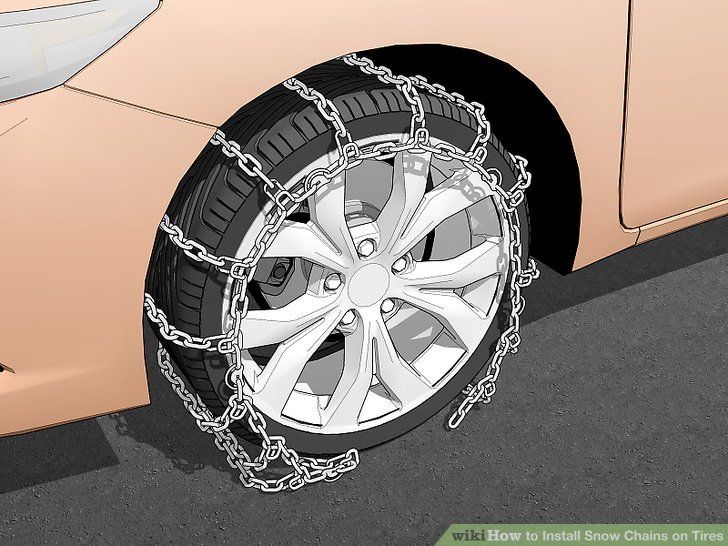 If you choose cheap tires, you may be able to spend $50 each, but on some vehicle types, you can easily spend $1500 or more on a new set of tires.
If you choose cheap tires, you may be able to spend $50 each, but on some vehicle types, you can easily spend $1500 or more on a new set of tires.
Now that we have the quick answer to the general cost of new tires, let’s take a closer look at the factors that affect the cost.
Factors Affecting Cost to Replace Your Tires1. Tire SizeThe biggest factor affecting your expense will be the size of the tire you need. You can find tires in all sizes, meant for a multitude of purposes. If you have a compact car, you will have the cheapest tires available, maybe even $50 each.
Of course, high-performance cars, large pickup trucks, specialty off-road vehicles, and SUVs will naturally cost more. A good rule of thumb is that the larger the tire is, the more you can expect to pay for it.
2. BrandThere are just as many tire brands as there are sizes. Many tire shops specialize in one budget brand and carry a multitude of name brands.
You will spend far less to go with the no-name brand, but you need to think about the quality. After all, if you save money today by choosing this brand, does it really pay off if you have to replace the tires again prematurely? You may also get a much longer mileage warranty with quality tires, than with inexpensive tires.
If you choose a premium tire brand such as Michelin, Continental, Goodyear, Bridgestone, you will of course pay much more, but you know that you will get quality tires that last a long time and keep your vehicle on the road.
RELATED: 6 Worst Tire Brands to Avoid Buying
3. Installation CostMost tire shops do not make a lot of money on the tire installation. The job itself doesn’t take long and the price can often be included with the cost of the tires.
On average, you can expect most shops to tack on about $20-$40 per tire for the installation. However, if you visit a warehouse club, that expense could be even less.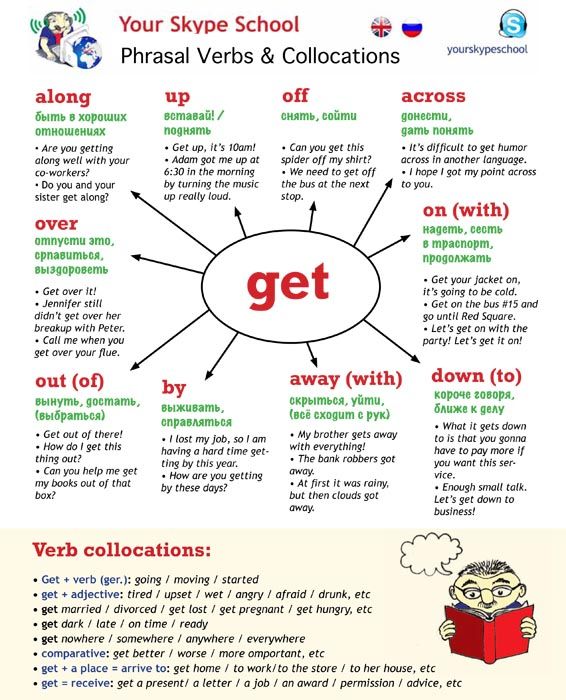
You don’t get to leave your old tires with the shop without paying a price. These shops must pay to have them recycled, so that cost gets passed down to you.
On average, the tire disposal fees will be between $2 and $10 per tire to dispose of them. If you would rather save this money, you can get rid of them yourself.
5. Road Hazard/Warranty ProtectionOn top of the regular price paid for your tires, you may choose to add some extra warranty protection. With road hazard protection, you are covered if your tires get a hole or blow out.
However, you must be careful who you choose to get road hazard through. Not all companies are going to follow through on the agreement, leaving you paying for protection that doesn’t matter when something actually goes wrong.
6. Wheel AlignmentWhen your new tires are installed, you will need to get a wheel alignment. Having properly aligned tires ensures that they last as long as possible.
You might pay between $75 and $200 to have the wheels aligned, depending on how many need to be done. However, this money can be seen as an investment, ensuring that your tires continue to provide reliable transportation.
How to Save Money on Tires1. Shop AroundThe most important factor is shopping around. You can call one location and get a price on a particular set of tires and the cost is completely different somewhere else, even though they are the same tires.
When you are shopping around, keep a couple of costs in mind. You will have the cost of the tires, the cost of installation and any fees that the company charges. Ask for the “out the door” price, so you can compare it apples-to-apples.
RELATED: How Much Do Rims Cost?
2. Watch for SalesYou can get a great deal if you shop during a sale. Of course, it’s not always convenient to wait for the next sale, but if you have some time before the tires need to be changed, this is a great way to save.
Throughout the year, tire shops will offer various sales. You can take advantage of a Buy 3, Get 1 Free deal or enjoy a certain percentage off. Most tire sales correspond with holidays, so you can tell when one might be around the corner.
3. Take Advantage of RebatesTire shops don’t often make a whole lot on the tire, so discounts can be limited. However, the manufacturers are happy to offer rebates throughout the year.
Most of the rebates are through the mail but can be found online. Additionally, the tire shops have the inside scoop on what’s available, so be sure to ask.
4. Ask about TakeoffsIt’s not always wise to purchase used tires, but the takeoff is something entirely different. These tires were installed brand-new and only used for a couple of days before the customer decided they didn’t want them.
It could be that the client didn’t appreciate the ride or simply decided they wanted something better. Either way, the tire shop will offer the replacement tires at a discounted price, so be sure to ask what’s available, especially if you use a popular tire size.
Either way, the tire shop will offer the replacement tires at a discounted price, so be sure to ask what’s available, especially if you use a popular tire size.
If you live in a cold climate where a lot of snow falls, you might have two sets of tires. Most people in these regions use summer and winter tires. With two sets of tires, you have a lot more money out, especially every time you need to have them switched.
If you aren’t actually driving in the snow, it might be better to use all-season tires throughout the year. While these aren’t going to get you through deep snow, there’s no sense spending more for something you don’t need. Evaluate your options and see if you can stick to using one set all year long.
RELATED: 10 Best All-Season Tires – Review & Buyer’s Guide
The lifespan of a tire will depend on the type of tire, the type of driving you do, and the climate. Generally, tires last between 50,000 and 80,000 miles and 6 years. If you drive a lot in city traffic and brake a lot or live in a hot climate, your tires may wear out sooner. If you often drive around with low tire pressure or a bad wheel alignment, they may also wear down sooner.
Generally, tires last between 50,000 and 80,000 miles and 6 years. If you drive a lot in city traffic and brake a lot or live in a hot climate, your tires may wear out sooner. If you often drive around with low tire pressure or a bad wheel alignment, they may also wear down sooner.
If your tire tread depth is close to 2/32” or under, it’s definitely time to replace them. Most tire manufacturers recommend replacing tires every 6 years, regardless of the number of miles driven. This is because tire rubber degrades over time, even if the tires are not used. Tires that are more than 6 years old should be inspected by a professional to determine if they are safe to use.
If your car is two-wheel-drive, it’s fine to replace two tires on the same axle instead of four, although you need to consider that your car will handle differently with two new tires than with four. If you are replacing two tires, it is best to put the new or best tires on the rear axle, as this will improve traction and stability.
On many 4WD and AWD cars, however, the diameter of the tires must match, otherwise, you can damage the transmission or the differential. Therefore, it is recommended to replace all four tires on 4WD cars, and it’s a requirement for many car brands like BMW and Audi.
You need to read the tire dimensions on your old tires and take them to the tire shop. You can also call your authorized dealer or check your owner’s manual if the wheels are stock.
Consumer disputes over the age of tires have not subsided for several seasons. Buyers are excited that the warranty period for tires is limited to 5-6 years according to GOST, and after the expiration of this period, the rubber becomes unusable.
Is this really the case, read this article.
Manufacturers of most brands on their products set Shelf life is 5 years and service life is also 5 years .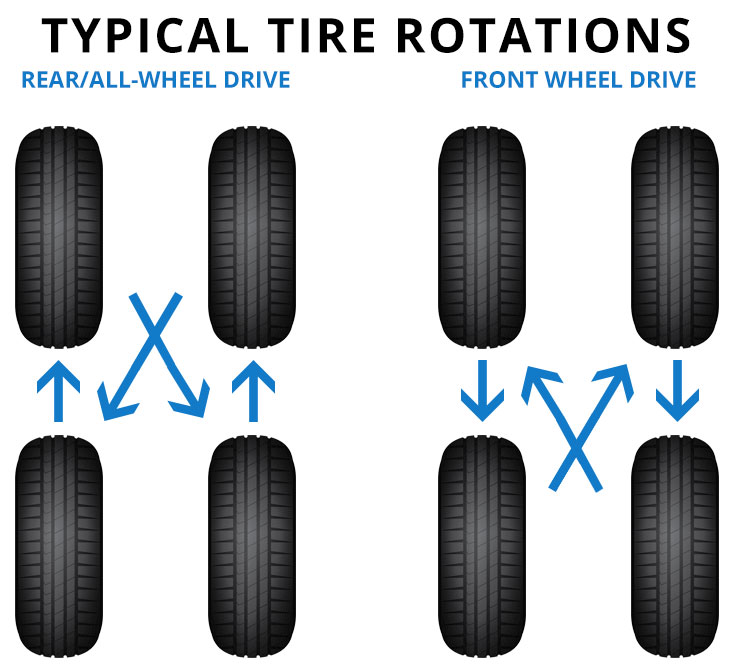
The shelf life of a tire is the period during which it retains its performance when properly stored.
The end of this period does not mean that the tires have become unusable . A shelf life of 5 years is given by manufacturers because, by law, they cannot set a shelf life higher than the service life. Tires over 5 years of storage cannot be called damaged or defective, their technical characteristics may be slightly reduced. American researchers argue that the period of storage of "shoes" must be at least 10 years. Experts from Germany are sure that it cannot exceed 6 years. nine0003
The expiration date of tires is the warranty period during which the manufacturer is responsible for the quality and condition of the tire if it was used for its intended purpose without violating the operating rules.
According to Russian legislation (GOST 5513, GOST 4754-97) , the service life of tires is 5 years from the date of manufacture.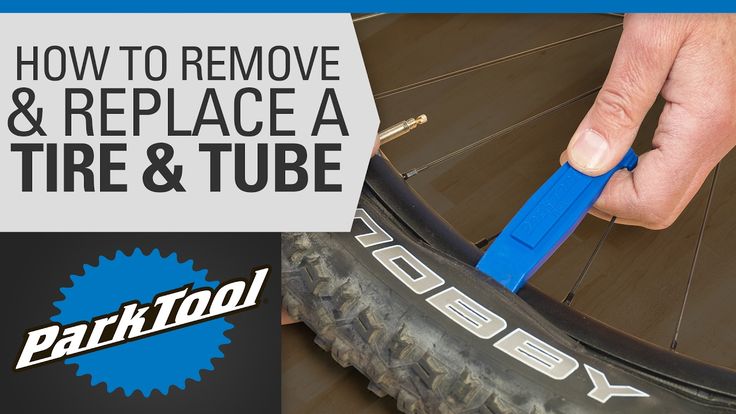
How can I find out the date of manufacture of tires? nine0010
You can find out the age of tires by a special DOT code. Tires manufactured after 2000 in the DOT code contain two pairs of numbers, where the first pair indicates the week number of the year, and the second pair indicates the year. Earlier tires before 2000 have 3 numbers in their composition, where the first two digits are the week number, and the last one is the year (see the transcript in the photo).
Determination of the average shelf life of a tire according to GOST and operating conditions. nine0010
- The symbol ZR denotes tires for high-speed cars. They are recommended to be used at speeds over 240 km/h. up to 6 years
- Tires with the H symbol are used at a maximum speed of 210 km/h. within 5 years.
- The sign S symbolizes the maximum permissible speed of 180 km/h. and operational period of 4-5 years.
Most tire manufacturers do not agree that tire life is limited to 5 years. Each company has its own opinion on this matter. We analyzed several of them and the information they posted on their official websites. nine0003
Each company has its own opinion on this matter. We analyzed several of them and the information they posted on their official websites. nine0003
Michelin
The French tire manufacturer Michelin has become famous for its active fight against the perception of the rapid aging of tires as a perishable product. Her information campaign "Tires Are Not Bananas" created a lot of noise in the automotive environment. According to the representative office, several test trials were carried out in Saudi Arabia, South Korea and Germany. As a result of testing, no difference was found between new tires and tires stored for 3 years. They were tested for various characteristics such as rolling resistance, high speed durability, etc. Tires with a one-year life were approximately equal in performance to 10-year unused tyres. nine0003
Michelin focuses the attention of car owners on the fact that tires are not a perishable product, their shelf life is not as important as the service life is important, starting from the date the tires are installed on the rims. It is from this moment that the tire is subjected to all tests: pressure, temperature changes, wear, contact with uneven and sharp coatings, etc.
It is from this moment that the tire is subjected to all tests: pressure, temperature changes, wear, contact with uneven and sharp coatings, etc.
Continental
On the Russian official website of Continental, we found the following information on the expiration dates of tires. nine0003
“When a tire is stored in the correct position and under the recommended conditions, it will not lose its original balanced performance for 5 years from the date of manufacture of the tire.
A properly maintained, unused tire less than 5 years old can be sold as a new tire and used normally.
Continental recommends replacing all tires (including spares) with a sidewall date greater than 10 years.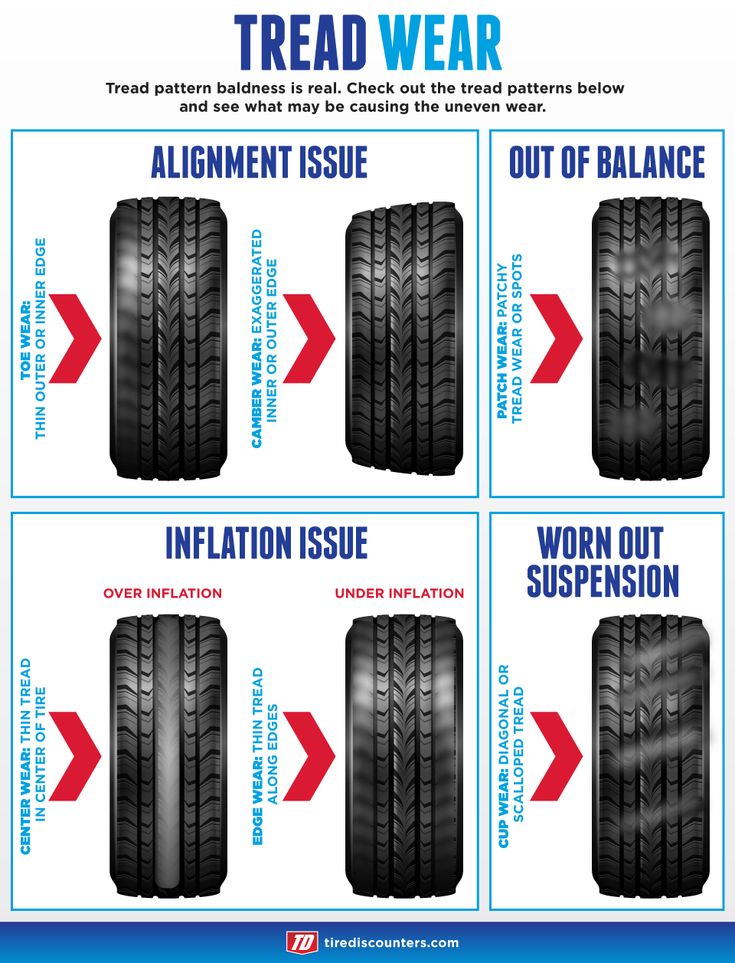 nine0003
nine0003
Nokian
The following information is posted on the Nokian official website:
“Tire life is not defined by law, but tires can only be considered “new” if they have been manufactured within the last five years. The recommended service life of tires is six years and the recommended maximum period is 10 years.
The opinion of our specialists, based on many years of experience, coincides with the opinion of manufacturers: the shelf life is 5 years + the service life is up to 10 years. Moreover, more "adult" tires, in our opinion, are of better quality. nine0003
To keep tires as long as possible, they are stored in compliance with all rules and recommendations. The main condition is a cool, ventilated, darkened room away from oils, paints, ozone, and heat sources.
Rubber products tend to lose their performance over the years. To prevent and slow down this process, manufacturers add polymers to the rubber compound..jpg) They prevent oxidative processes that occur due to the interaction of protectors with oxygen and ozone. nine0003
They prevent oxidative processes that occur due to the interaction of protectors with oxygen and ozone. nine0003
The following are the main conditions for the proper storage of tires in accordance with GOST 24779-81:
Maintaining a constant regime without sudden jumps, slight temperature fluctuations from -30°С to +35°С are allowed;
Provide a low humidity level of 50-80% in a dry, ventilated cool room;
Avoid direct sunlight, use darkened hangars, shield heat sources; nine0003
Keep away from sources of heat;
Tires should not come into contact with corrosive, copper materials.
Avoid kinking, loading or positioning on an uneven surface.
Avoid contact with oils, organic solvents, acids, alkalis, fuels and lubricants on the tire surface. It is forbidden to lay tires on a wet and dirty surface. nine0003
In the warm season, when storing tires outside, they should be covered with light-tight material and raised above ground level to ensure ventilation and prevent the occurrence of the greenhouse effect.
Storage on reflective, light and heat absorbing surfaces is prohibited.
Keep away from chemicals, oils, paints, open flames, electric motors that produce ozone. nine0003
Used tires must be washed and dried.
Tires without rims should be stored upright.
The service life depends on many factors: the load on the car, the quality of the roads, the driving style, the distance traveled, tire damage, etc. To increase their service life, follow these rules: nine0003
Check tire pressure every 2-3 weeks. With reduced pressure, tire wear increases by the equivalent of a % reduction. For example, a 15% reduction in pressure can result in a 15% reduction in service life. Inflated tires are less scary.
The wear of the front tires is always significantly higher than the rear ones, so it is recommended to swap them after some time, carefully watching the direction of the tread pattern and the direction of rotation.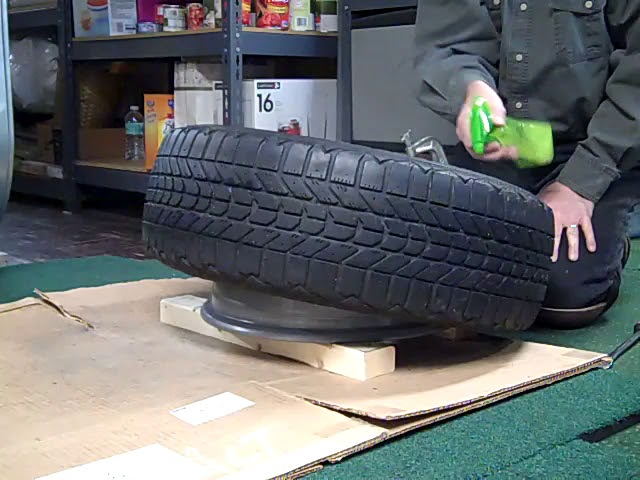 nine0003
nine0003
Proper alignment of tires in relation to rims. If the direction is not the same, then performance is significantly reduced.
To prevent damage to the sidewalls of tires, avoid close proximity to curbs and high ledges.
Wash off dirt from the surface of the rubber and from deep grooves with special cleaning agents. nine0003
Adhere to an even driving style without harsh brakes and quick starts.
Do not overload the car beyond the norm. 20% excess weight leads to a 30% loss of tire life.
Keep the wheels balanced and check the alignment angles annually.
The main condition for a long tire life is:
- high quality products,
- careful operation,
- proper storage of tires in the off-season,
- timely diagnosis.
The age of tires in standard storage is a minor non-determining factor that should not be taken into account when buying them.
Previous article Next article
Tire and rim size charts
| Diameter | Size | Rim width | ||
|---|---|---|---|---|
| Min. | Recommended mend. | Max. | ||
| 12 | 125 R12 | 3.5 | 3.0 | 4.0 |
| 135 R12 | 4.0 | 3.5 | nine0251 4.5||
| 145 R12 | 4.0 | 3.5 | 5.0 | |
| 155 R12 | 4.5 | 4.0 | 5. 0 0 | |
| 145/70 R12 | 4.5 | 4.0 | 5.0 | |
| 155/70 R12 | 4.5 | 4.0 | 5.5 | |
| 13 | 145/80 R13 | 3.5 | 4 | 5 |
| 145/70 R13 | 3.5 | 4.5 | 5 | |
| 145/60 R13 | 4 | 4.5 | 5 | |
| 155/80 R13 | nine0251 44.5 | 5 | ||
| 155/70 R13 | 4 | 4.5 | 5 | |
| 165/80 R13 | 4 | 4.5 | 5 | |
| 165/70 R13 | 4 | 5 | 5.5 | |
| 165/65 R13 | nine0251 4.55 | 6 | ||
| 175/70 R13 | 4.5 | 5 | 6 | |
| 175/65 R13 | 5 | 5 | 6 | |
| 185/70 R13 | 4.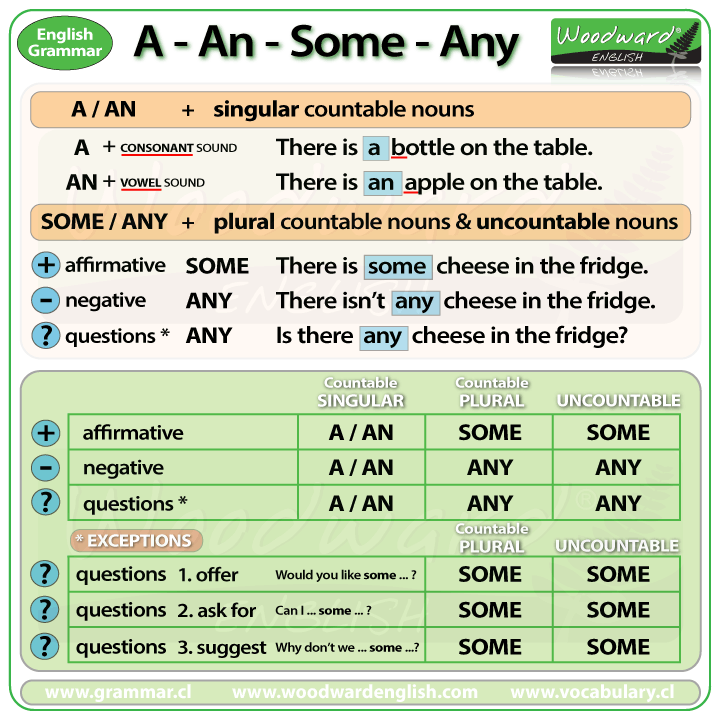 5 5 | 5.5 | 6 | |
| 14 | nine0251 145/65 R144 | 4.5 | 5 | |
| 155/65 R14 | 4.5 | 4.5 | 5.5 | |
| 165/70 R14 | 4 | 5 | 5.5 | |
| 165/65 R14 | 4.5 | 5 | 6 | nine0230|
| 165/60 R14 | 4.5 | 5 | 6 | |
| 175/80 R14 | 4.5 | 5 | 6 | |
| 175/70 R14 | 4.5 | 5 | 6 | |
| 175/65 R14 | 5 | 5 | 6 | nine0230|
| 175/60 R14 | 5 | 5 | 6 | |
| 185/70 R14 | 4.5 | 5.5 | 6 | |
| 185/65 R14 | 5 | 5.5 | 6.5 | |
| 185/60 R14 | 5 | 5.5 | 6. 5 5 | nine0230 |
| 185/55 R14 | 5 | 6 | 6.5 | |
| 195/70 R14 | 5 | 6 | 6.5 | |
| 195/65 R14 | 5.5 | 6 | 7 | |
| 195/60 R14 | 5.5 | 6 | 7 | nine0230|
| 15 | 145/65 R15 | 4 | 4.5 | 5 |
| 155/70 R15 | 4 | 4.5 | 5 | |
| 155/65 R15 | 4.5 | 4.5 | 5.5 | |
| 165/65 R15 | 4.5 | nine0251 56 | ||
| 175/65 R15 | 5 | 5 | 6 | |
| 175/60 R15 | 5 | 5 | 6 | |
| 175/55 R15 | 5 | 5.5 | 6 | |
| 185/65 R15 | 5 | nine0251 5.56.5 | ||
| 185/60 R15 | 5 | 5. 5 5 | 6.5 | |
| 185/55 R15 | 5 | 6 | 6.5 | |
| 195/70 R15 | 5 | 6 | 6.5 | |
| 195/65 R15 | 5.5 | nine0251 67 | ||
| 195/60 R15 | 5.5 | 6 | 7 | |
| 195/55 R15 | 5.5 | 6 | 7 | |
| 195/50 R15 | 5.5 | 6 | 7 | |
| 195/45 R15 | 6 | nine0251 6.57.5 | ||
| 205/70 R15 | 5 | 6 | 7 | |
| 205/65 R15 | 5.5 | 6 | 7.5 | |
| 205/60 R15 | 5.5 | 6 | 7.5 | |
| 205/55 R15 | 5.5 | nine0251 6.57.5 | ||
| 205/50 R15 | 5.5 | 6.5 | 7.5 | |
| 215/70 R15 | 5. 5 5 | 6.5 | 7 | |
| 215/65 R15 | 6 | 6.5 | 7.5 | |
| 225/60 R15 | 6 | 6.5 | 8 | |
| 225/55 R15 | 6 | 7 | 8 | |
| 225/50 R15 | 6 | 7 | 8 | |
| 16 | 195/60 R16 | 5.5 | 6 | 7 |
| 195/55 R16 | 5.5 | 6 | 7 | |
| 195/50 R16 | 5.5 | 6 | 7 | |
| 195/45 R16 | 6 | 6.5 | 7.5 | |
| 205/60 R16 | 5.5 | 6 | 7.5 | nine0230|
| 205/55 R16 | 5.5 | 6.5 | 7.5 | |
| 205/50 R16 | 5.5 | 6.5 | 7.5 | |
| 205/45 R16 | 6.5 | 7 | 7. 5 5 | |
| 215/65 R16 | 6 | 6.5 | 7.5 | |
| 215/60 R16 | 6 | 6.5 | 7.5 | |
| 215/55 R16 | 6 | 7 | 7.5 | |
| 215/40 R16 | 7 | 7.5 | 8.5 | |
| 225/60 R16 | 6 | 6.5 | nine0251 8||
| 225/55 R16 | 6 | 7 | 8 | |
| 225/50 R16 | 6 | 7 | 8 | |
| 235/60 R16 | 6.5 | 7 | 8.5 | |
| 245/55 R16 | 7.5 | 8 | nine0251 9||
| 17 | 205/55 R17 | 5.5 | 6.5 | 7.5 |
| 205/50 R17 | 5.5 | 6.5 | 7.5 | |
| 205/45 R17 | 6.5 | 7 | 7.5 | |
| 205/40 R17 | nine0251 7 7. 5 5 | 8 | ||
| 215/60 R17 | 6 | 6.5 | 7.5 | |
| 215/55 R17 | 6 | 7 | 7.5 | |
| 215/50 R17 | 6 | 7 | 7.5 | |
| 215/45 R17 | nine0251 77 | 8 | ||
| 215/40 R17 | 7 | 7.5 | 8.5 | |
| 225/60 R17 | 6 | 6.5 | 8 | |
| 225/55 R17 | 6 | 7 | 8 | |
| 225/50 R17 | nine0251 67 | 8 | ||
| 225/45 R17 | 7 | 7.5 | 8.5 | |
| 225/35 R17 | 7.5 | 8 | 9 | |
| 235/65 R17 | 6.5 | 7 | 8.5 | |
| 235/55 R17 | nine0251 6.57.5 | 8.5 | ||
| 235/50 R17 | 6. 5 5 | 7.5 | 8.5 | |
| 235/45 R17 | 7.5 | 8 | 9 | |
| 235/40 R17 | 8 | 8.5 | 9.5 | |
| 245/55 R17 | 7 | 7.5 | 8.5 | |
| 245/45 R17 | 7.5 | 8 | 9 | |
| 245/40 R17 | 8 | 8.5 | 9.5 | |
| 255/55 R17 | 7 | 8 | 9 | |
| 255/45 R17 | 8 | 8.5 | 9.5 | |
| 255/40 R17 | 8.5 | 9 | 10 | |
| 265/40 R17 | 9 | 9.5 | 10.5 | |
| 275/40 R17 | 9 | 9.5 | 11 | |
| 285/40 R17 | 9.5 | 10 | 11 | |
| 335/35 R17 | 11 | 12 | 13 | |
| 18 | 205/40 R18 | 7 | 7. 5 5 | 8 |
| 215/45 R18 | 7 | 7 | nine0251 8||
| 225/60 R18 | 6 | 6.5 | 8 | |
| 225/45 R18 | 7 | 7.5 | 8.5 | |
| 225/40 R18 | 7.5 | 8 | 9 | |
| 225/35 R18 | 7.5 | 8 | nine0251 9||
| 235/65 R18 | 6.5 | 7 | 8.5 | |
| 235/50 R18 | 6.5 | 7.5 | 8.5 | |
| 235/45 R18 | 7.5 | 8 | 9 | |
| 235/40 R18 | 8 | 8.5 | nine0251 9.5||
| 245/50 R18 | 7 | 7.5 | 8.5 | |
| 245/45 R18 | 7.5 | 8 | 9 | |
| 245/40 R18 | 8 | 8.5 | 9.5 | |
| 245/35 R18 | 8 | 8. 5 5 | nine0251 9.5 ||
| 255/45 R18 | 8 | 8.5 | 9.5 | |
| 255/40 R18 | 8.5 | 9 | 10 | |
| 255/35 R18 | 8.5 | 9 | 10 | |
| 265/40 R18 | 9 | 9.5 | nine0251 10.5||
| 265/35 R18 | 9 | 9.5 | 10.5 | |
| 275/45 R18 | 8.5 | 9 | 10.5 | |
| 275/40 R18 | 9 | 9.5 | 11 | |
| 275/35 R18 | 9 | 9.5 | 11 | |
| 285/40 R18 | 9.5 | 10 | 11 | |
| 285/35 R18 | 9.5 | 10 | 11 | |
| 285/30 R18 | 10 | 10 | 10.5 | |
| 295/35 R18 | 10 | nine0251 10.511.5 | ||
| 295/30 R18 | 10. 5 5 | 10.5 | 11 | |
| 315/30 R18 | 11 | 11 | 12.5 | |
| 335/30 R18 | 12 | 12 | 12.5 | |
| 345/35 R18 | nine0251 11.512 | 13.5 | ||
| 345/30 R18 | 12 | 12 | 12.5 | |
| 19 | 225/40 R19 | 7.5 | 8 | 9 |
| 225/35 R19 | 7.5 | 8 | 9 | nine0230|
| 235/35 R19 | 8 | 8.5 | 9.5 | |
| 245/45 R19 | 7.5 | 8 | 9 | |
| 245/40 R19 | 8 | 8.5 | 9.5 | |
| 245/35 R19 | 8 | 8.5 | 9.5 | |
| 255/40 R19 | 8.5 | 9 | 10 | |
| 255/35 R19 | 8.5 | 9 | 10 | |
| 255/30 R19 | 8. 5 5 | 9 | 9.5 | |
| 265/35 R19 | 9 | 9.5 | nine0251 10.5||
| 265/30 R19 | 9 | 9.5 | 10 | |
| 275/50 R19 | 7.5 | 8.5 | 9.5 | |
| 275/40 R19 | 9 | 9.5 | 11 | |
| 275/35 R19 | 9 | 9.5 | 11 | |
| 275/30 R19 | 9 | 9.5 | 10 | |
| 285/35 R19 | 9.5 | 10 | 11 | |
| 295/30 R19 | 10.5 | 10.5 | 11 | |
| 305/30 R19 | 11 | nine0251 1112 | ||
| 315/25 R19 | 11 | 11.5 | 12 | |
| 325/30 R19 | 11 | 11.5 | 12 | |
| 345/30 R19 | 12 | 12 | 12. 5 5 | |
| 20 | 235/30 R20 | 8.5 | ||
| 245/40 R20 | 8 | 8.5 | 9.5 | |
| 245/35 R20 | 8 | 8.5 | 9.5 | |
| 245/30 R20 | 8 | 8.5 | 9 | |
| 255/35 R20 | 8.5 | 9 | 10 | |
| 255/30 R20 | 8.5 | 9 | 9.5 | |
| 275/45 R20 | 8.5 | 9 | 10.5 | |
| 275/35 R20 | 9 | 9.5 | 11 | |
| 285/30 R20 | 10 | 10 | 10.5 | |
| 285/25 R20 | 10.5 | |||
| 295/25 R20 | 10.5 | 10.5 | 11 | |
| 305/35 R20 | 10 | 11 | 12 | nine0230|
| 305/25 R20 | 10. 5 5 | 11 | 11.5 | |
| 325/25 R20 | 11.5 | 12 | 12.5 | |
| 335/30 R20 | 12 | 12 | 12.5 | |
| 21 | 245/35 R21 | 8 | nine0251 8.59.5 | |
| 255/30 R21 | 9 | 9 | 9.5 | |
| 285/30 R21 | 10 | 10 | 10.5 | |
| 295/25 R21 | 10 | 10.5 | 11 | |
| 22 | 255/30 R22 | 8.5 | 9 | 9.5 |
| 295/25 R22 | 10.5 | 10.5 | 11 | |
| Diameter | Size | Rim width | ||
|---|---|---|---|---|
| Min. nine0234 | Recommended mend. 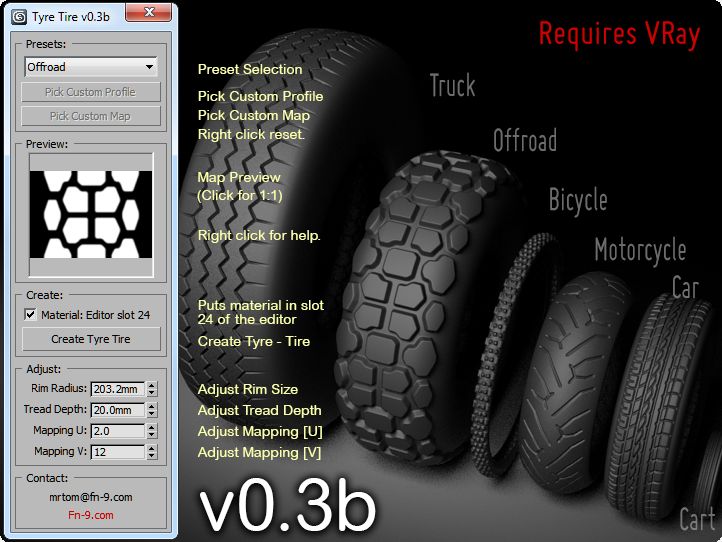 | Max. | ||
| 15 | 185/65 R15 | 5 | 5.5 | 6.5 |
| 195/80 R15 | 5 | 5.5 | 6.5 | |
| 195/70 R15 | 5 | nine0251 66.5 | ||
| 205/70 R15 | 5 | 6 | 7 | |
| 215/80 R15 | 5.5 | 6 | 7 | |
| 225/75 R15 | 6 | 6 | 7.5 | |
| 235/75 R15 | 6 | nine0251 6.58 | ||
| 255/75 R15 | 6.5 | 7 | 8.5 | |
| 265/70 R15 | 7 | 8 | 9 | |
| 16 | 205/80 R16 | 5 | 5.5 | 7 |
| 215/70 R16 | nine0251 5.56.5 | 7 | ||
| 215/65 R16 | 6 | 6.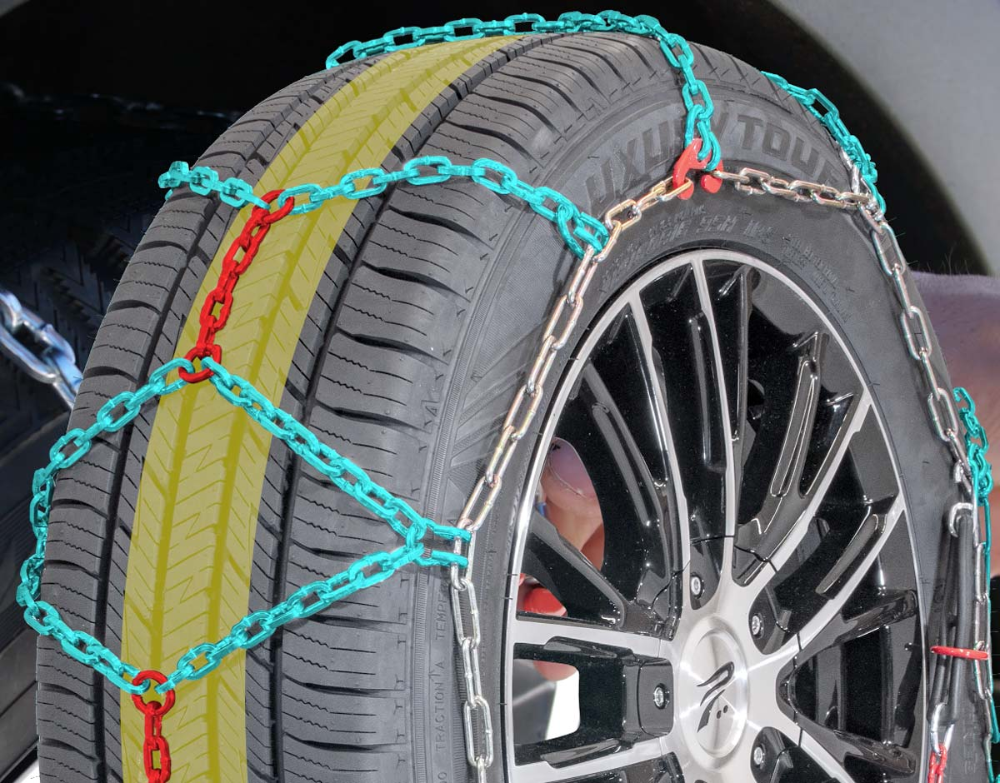 5 5 | 7.5 | |
| 215/60 R16 | 6 | 6.5 | 7.5 | |
| 225/75 R16 | 6 | 6 | 7.5 | |
| 225/70 R16 | nine0251 66.5 | 7.5 | ||
| 235/85 R16 | 6 | 6.5 | 7.5 | |
| 235/70 R16 | 6 | 7 | 8 | |
| 235/60 R16 | 6.5 | 7 | 8.5 | |
| 245/70 R16 | nine0251 6.57 | 8 | ||
| 255/70 R16 | 6.5 | 7.5 | 8.5 | |
| 255/65 R16 | 7 | 7.5 | 9 | |
| 265/70 R16 | 7 | 8 | 9 | |
| 275/70 R16 | nine0251 78 | 9 | ||
| 17 | 225/65 R17 | 6 | 6.5 | 8 |
| 225/55 R17 | 6 | 7 | 8 | |
| 235/65 R17 | 6.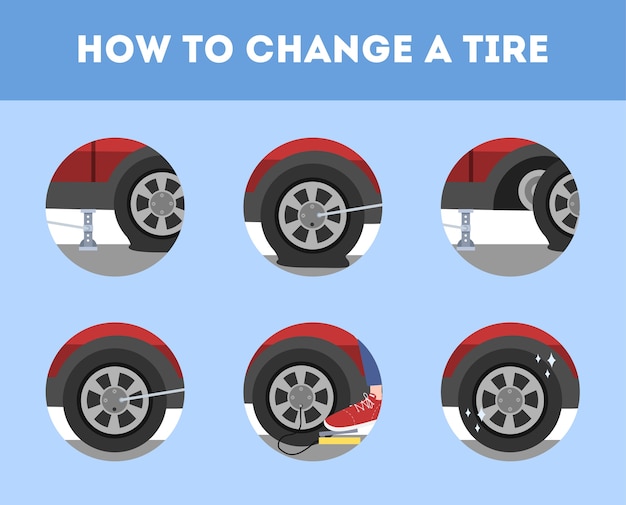 5 5 | 7 | 8.5 | |
| 235/55 R17 | 6.5 | 7.5 | 8.5 | |
| 245/65 R17 | 7 | 7 | 8.5 | |
| 255/60 R17 | 7 | 7.5 | 9 | |
| 255/50 R17 | 7 | 8 | 9 | |
| 265/65 R17 | 7.5 | 8 | 9.5 | |
| 265/70 R17 | 7 | 8 | 9 | |
| 275/65 R17 | 7.5 | 8 | 9.5 | |
| 275/55 R17 | 7.5 | 8.5 | 9.5 | nine0230|
| 18 | 225/55 R18 | 6 | 7 | 8 |
| 235/60 R18 | 6.5 | 7 | 8.5 | |
| 235/50 R18 | 6.5 | 7.5 | 8.5 | |
| 255/60 R18 | 7 | 7.5 | nine0251 9||
| 255/55 R18 | 7 | 8 | 9 | |
| 255/45 R18 | 8 | 8. 5 5 | 9.5 | |
| 265/60 R18 | 7.5 | 8 | 9.5 | |
| 285/50 R18 | 8 | 9 | nine0251 10||
| 19 | 255/55 R19 | 7 | 8 | 9 |
| 255/50 R19 | 7 | 8 | 9 | |
| 275/45 R19 | 8.5 | 9 | 10.5 | |
| 285/45 R19 | 9 | nine0251 9.510.5 | ||
| 20 | 255/50 R20 | 7 | 8 | 9 |
| 275/50 R20 | 7.5 | 8.5 | 9.5 | |
| 275/40 R20 | 9 | 9.5 | 11 | |
| 295/40 R20 | 10 | 10.5 | 11.5 | |
| 315/35 R20 | 10.5 | 11 | 12.5 | |
| 21 | 295/35 R21 | 10 | 10. 5 5 | 11.5 |
| 22 | 285/35 R22 | 9.5 | 10 | 11 |
| 295/30 R22 | 10 | 10.5 | 11 | |
| 23 | 315/25 R23 | 11 | 11.5 | 12 |
| Diameter | nine0224 SizeRim width | |||
|---|---|---|---|---|
| Min. | Recommended mend. | Max. | ||
| 13 | 155/80 R13 | 4 | 4.5 | 5 |
| 165/70 R13 | 4.5 | 5 | nine0251 5||
| 14 | 165/70 R14 | 4.5 | 5 | 5 |
| 165/75 R14 | 4 | 4. 5 5 | 5 | |
| 175/65 R14 | 5 | 5 | 5.5 | |
| 175/75 R14 | 4.5 | nine0251 55.5 | ||
| 185/75 R14 | 4.5 | 5 | 6 | |
| 185/80 R14 | 4.5 | 5 | 6 | |
| 195/75 R14 | 5 | 5.5 | 6 | |
| 195/80 R14 | 5 | nine0251 5.56 | ||
| 205/75 R14 | 5 | 5.5 | 6.5 | |
| 15 | 185/80 R15 | 4.5 | 5 | 6 |
| 195/70 R15 | 5.5 | 6 | 6 | |
| 205/65 R15 | nine0251 5.56 | 6.5 | ||
| 205/70 R15 | 5.5 | 6 | 6.5 | |
| 215/65 R15 | 6 | 6.5 | 7 | |
| 215/70 R15 | 6 | 6. 5 5 | 7 | |
| 225/70 R15 | nine0251 66.5 | 7 | ||
| 16 | 6.5/100 R16 | 4.5 | 4.5 | 6 |
| 175/75 R16 | 4.5 | 5 | 5.5 | |
| 175/80 R16 | 4.5 | 5 | 5.5 | |
| 185/75 R16 | 4.5 | 5 | 6 | |
| 195/60 R16 | 5.5 | 6 | 6.5 | |
| 195/65 R16 | 5.5 | 6 | 6 | |
| 195/75 R16 | 5 | 5.5 | 6 | nine0230|
| 205/65 R16 | 5.5 | 6 | 6.5 | |
| 205/75 R16 | 5 | 5.5 | 6.5 | |
| 215/60 R16 | 6 | 6.5 | 7 | |
| 215/65 R16 | 6 | 6.5 | 7 | nine0230|
| 215/75 R16 | 5. | |||